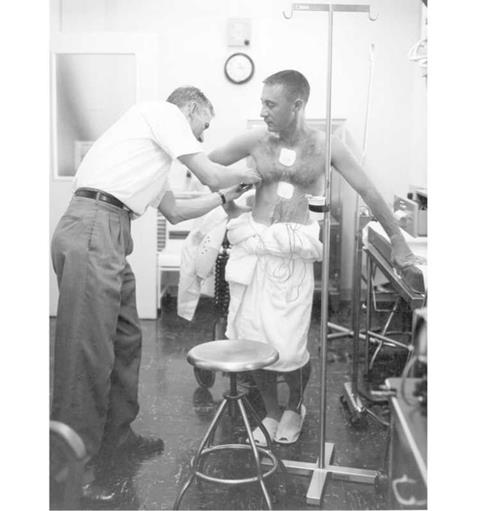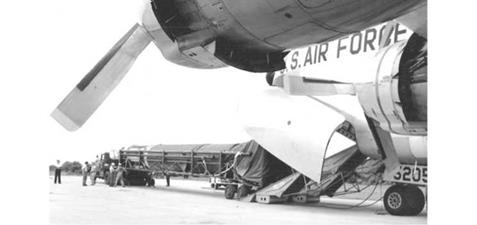CHECKS AND REVIEWS
From 14-17 May, Grissom participated in Systems Engineering Department Report (SEDR) 83, a capsule pressure chamber test. This was the only chance for Grissom to familiarize himself with the operation of the environmental control system under simulated flight conditions. It also provided an opportunity for physicists to gather baseline metabolic data on him. And over the following three days, 18-20 May, he participated in SEDR 61, the communications systems check that permitted him to check out all of his communications equipment.
Next, from 1-3 June, Grissom took part in SEDR 73, the capsule’s manual reaction control systems tests. This gave him the opportunity to manipulate the control stick and become familiar with the overall ‘feel’ of the control system. As his training intensified, Grissom also ran a total of 12 simulated missions on the procedures trainer from 17-23 June, followed by 24 simulated missions on the ALFA trainer on 28 June.10
While all of this advanced training was taking place at the Cape, there were also daily scheduling meetings to attend. These sessions kept everyone apprised of the flight’s progress and any problems that had cropped up. As Grissom reflected in We Seven, this was where they reviewed any work being done on the various systems.
“It was also here that the perfectionists in the crowd would sometimes try to stop the show and redesign the whole system again from scratch. I wanted a safe and efficient capsule as much as anyone, and I did not blame the engineers, who were proud of their work, for trying to make each part they were working on absolutely perfect. I knew that if something happened to me which could be traced to one of their decisions, it would hang heavy on them. But I had also noticed, during my days as a test pilot, that engineers are seldom satisfied to have something work well. They often want to go on testing and testing a system until it is almost worn out. I felt, therefore, that it was up to me to stay on top of the situation and make sure that we got a spacecraft at all, and then try to reassure the engineers that if it satisfied the pilot who had to fly it, it ought to satisfy them. In order to convince them of my case, of course, I had to know the spacecraft myself, inside out.”11
The assigned Redstone rocket was slated for delivery to the Cape on 22 June, but as that date neared it became obvious that this particular booster would not be ready in time, so another was substituted. This arrived on a cargo aircraft from Huntsville on
|
Suit technician Joe Schmitt prepares Grissom for an SEDR test. (Photo: NASA) |
the scheduled date. Grissom, in his usual meticulous way, wanted to be part of this. When he got to Patrick AFB at Cape Canaveral the crew had already unloaded the Redstone and placed it on a trailer for the slow ride to the launch pad 15 miles away. “I joined the caravan, and when we reached the pad I got out and walked alongside the Redstone as it pulled in. I guess I looked a little eager, for Paul Donnelly, the capsule test conductor, spoke up.
“‘Don’t worry, Gus,’ he said, ‘they’re not going to shoot it without you.’”12
|
The MR-4 Redstone rocket arrives at the Cape. (Photo: NASA) |












